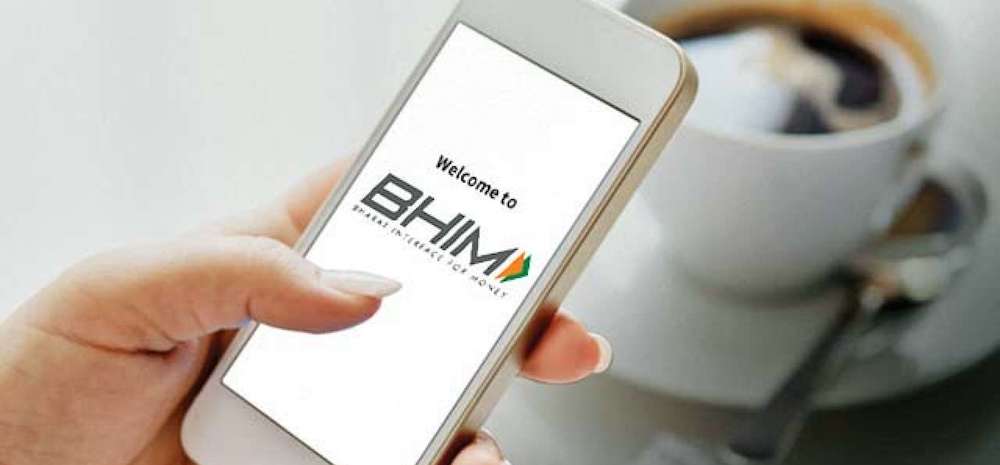BHIM 2.0 Aims To Beat Paytm, PhonePe With These Exciting Features (Buy IPO, Multiple Accounts & More)

In the present time, the Unified Payment Interface (UPI) ecosystem is expanding. This flagship UPI, launched by the Government of India, will be launching an updated version of its mobile payment app BHIM, naming it BHIM 2.0.
The government is to launch this app on October 21, packing it with four new features, including enabling participation by users in initial public offerings (IPOs), as it would accelerate its usage sharply.
BHIM 2.0 Coming On Oct 21
On December 30 2016, 2 months after the demonetization of Rs 1,000 and Rs 500 notes, Prime Minister Narendra Modi launched the Bharat Interface for Money (BHIM) app under the Digital India Mission, in order to boost the environment for cash-less transaction in India via UPI payments system.
The app was an immediate success and was downloaded 10 million times in 10 days. However, BHIM couldn’t bring that much of a positive response as was initially expected of it. It gradually began to lose momentum and its market to private competitors like PhonePe and Paytm. The government believes it can win back customers by offering additional features.
BHIM 2.0 will feature an auto bill mandate, multilingual support and ability to link multiple bank accounts.
What Problems Were Posed by BHIM?
BHIM was introduced as the start of a noble cause, which was to replace currency notes and coins by cashless transactions. However, it was soon replaced to the lower ranks by nimble digital payments competitors like Paytm and PhonePe.
Even though 19 additional banks integrated with BHIM between June 2018 and June 2019, the volume of transactions as well as the amount transacted per bank through the app declined during this period.
The volume of BHIM transactions per bank reduced by 38,000 and the total amount of money transacted per bank through BHIM dropped by 18 percent to Rs 55.88 crore from Rs 68.06 crore.
The reason for this shift is simple.
- BHIM can only be linked to the person’s bank account and not with credit or debit cards.
- The limit of transaction for sending or receiving money through BHIM is lesser than that provided by other apps.
- It doesn’t provide any offers or flexibility, unlike PhonePe or Paytm, which provide loads of them.
Many new customers are choosing other apps because BHIM has failed to build its brand like its competitors. Other payment applications, on the other hand are attracting customers by offering them merchant-linked discounts on their platforms regularly.
It must be duly noted that in this embryonic market, even the slightest step taken by BHIM towards flexibility will result in gaining market traction.
What Changes Shall BHIM 2.0 Bring Along?
BHIM has not captured the market that is traditionally held by the banks nor has it eroded the market share of the newer payment platforms. Inspite of all this, the government is very optimistic about the growth factors that BHIM 2.0 will bring along with it.
Power Advantages of BHIM over its Competitors
- It is easy and safe to use. The steps too are simple: download the BHIM app, link it to your mobile number and instantly send and receive money from your bank account.
- The payer doesn’t need the recipient’s account number to make the payment.
- The payer doesn’t need to load any money in the BHIM app; they can directly transfer the funds from his/her account.
- It can be used without a smartphone and without an internet connection.
The problem however, is that it hasn’t been advertised properly and adequately. It has been seen that the app receives maximum download on days when it is mentioned by PM Modi in his speeches. It is in dire need of a structured marketing strategy that highlights its vital advantages over competitors to ensure better brand recall.
BHIM also doesn’t have a distinct brand name. Every PSU bank has its individual UPI app. The problem is that these apps too have BHIM suffixed in them. For instance, SBI’s UPI app is called BHIM SBI.
Users have reported that they’ve been confused on which BHIM app to download, resulting in not downloading none. The good news is that even though BHIM is lagging in attracting customers, its underlying UPI system has been adopted by banks, private payment companies, merchants, and users.

Comments are closed, but trackbacks and pingbacks are open.